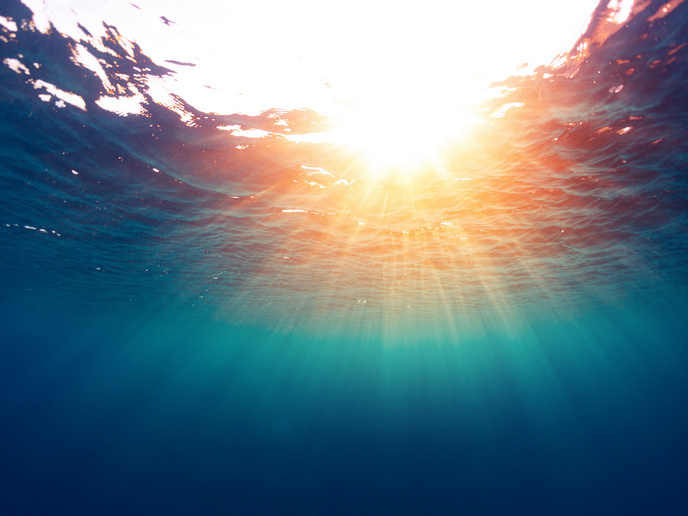Harnessing the power of warm tropical ocean waters
Harnessing the power of warm tropical ocean waters Cordis News


Testing of New Ocean Thermal Energy Technology for the EU-backed PLOTEC Project
Introduction
Overview
Clean energy technology developer Global OTEC has begun tests on a scaled design of an ocean thermal energy conversion (OTEC) platform. Developed with support from the EU-funded PLOTEC project, the platform will be used to convert solar heat energy stored in the oceans surrounding the EU’s overseas countries and territories into a dependable, cost-efficient source of power.
Sustainable Development Goals (SDGs)
- Goal 7: Affordable and Clean Energy
- Goal 13: Climate Action
- Goal 14: Life Below Water
Advantages of Ocean Thermal Energy Conversion (OTEC)
- OTEC is kinder to the environment than fossil fuels and nuclear power.
- OTEC does not take up land resources like solar, wind, and other renewable energy technologies.
- OTEC can generate electricity 24 hours a day, 365 days a year.
- OTEC has the potential to produce more useful and affordable energy than other renewable sources.
Testing and Insights
As reported in a news item posted on ‘Offshore Energy’, Global OTEC tested its cylindrical hull OTEC structure and cold water pipe at Charlton Lido, London, in early May 2023. This test was an important step towards the PLOTEC project’s goal to deploy an OTEC platform capable of withstanding the extreme weather of the tropical ocean at the Oceanic Platform of the Canary Islands (PLOCAN) test facility in Gran Canaria in 2024.
“This was our first experience in the water with the structure, which allowed us to crucially validate the connection point in a relevant environment,” reports Global OTEC founder and CEO Dan Grech. “We gained some vital insights that will inform the next iteration of our design – a really important feature of research and development projects. This will help us to prepare before we move into a wave tank and eventually the open ocean.”
How Ocean Thermal Energy Conversion (OTEC) Works
OTEC takes advantage of the natural temperature difference between tropical oceans’ warm upper layers – where the solar energy is collected – and the cooler waters far below the surface, to create electricity day and night all year round. The temperature difference is used to operate vapour turbines that drive generators and produce electricity.
The system functions as follows:
- A barge collects warm surface seawater (around 29 ℃), which is then used to evaporate a working fluid with a low boiling point.
- This creates a vapour that spins a turbine to produce electricity using a generator.
- At the same time, cold water (about 4 ℃) is drawn through a pipe from the ocean depths to cool the vapour.
- This turns the vapour back into a liquid, which can then be reused immediately, allowing the entire cycle to be repeated.
- The power generated is transmitted to the grid via an underwater cable.
Conclusion
The PLOTEC project, coordinated by PLOCAN, Spain, aims to optimize floating ocean thermal energy conversion platforms. With the potential to contribute to multiple Sustainable Development Goals (SDGs), including affordable and clean energy, climate action, and life below water, the development and testing of new ocean thermal energy technology by Global OTEC is a significant step towards achieving these goals. The project is expected to conclude in April 2025.
Keywords
PLOTEC, energy, ocean, ocean thermal energy conversion, OTEC, platform, power, electricity, vapour
SDGs, Targets, and Indicators
-
SDG 7: Affordable and Clean Energy
- Target 7.1: By 2030, ensure universal access to affordable, reliable, and modern energy services.
- Target 7.2: By 2030, increase substantially the share of renewable energy in the global energy mix.
- Indicator: The article discusses the development of ocean thermal energy conversion (OTEC) technology, which aims to provide a cost-efficient source of power from the oceans.
-
SDG 13: Climate Action
- Target 13.2: Integrate climate change measures into national policies, strategies, and planning.
- Target 13.3: Improve education, awareness-raising, and human and institutional capacity on climate change mitigation, adaptation, impact reduction, and early warning.
- Indicator: The article highlights that OTEC is kinder to the environment than fossil fuels and nuclear power, indicating a climate-friendly approach to energy generation.
Table: SDGs, Targets, and Indicators
| SDGs | Targets | Indicators |
|---|---|---|
| SDG 7: Affordable and Clean Energy | Target 7.1: By 2030, ensure universal access to affordable, reliable, and modern energy services. | The article discusses the development of ocean thermal energy conversion (OTEC) technology, which aims to provide a cost-efficient source of power from the oceans. |
| SDG 7: Affordable and Clean Energy | Target 7.2: By 2030, increase substantially the share of renewable energy in the global energy mix. | The article highlights the use of OTEC as a renewable energy source that can contribute to increasing the share of renewable energy in the global energy mix. |
| SDG 13: Climate Action | Target 13.2: Integrate climate change measures into national policies, strategies, and planning. | The article mentions that OTEC is kinder to the environment than fossil fuels and nuclear power, indicating its contribution to climate change mitigation. |
| SDG 13: Climate Action | Target 13.3: Improve education, awareness-raising, and human and institutional capacity on climate change mitigation, adaptation, impact reduction, and early warning. | The article does not explicitly mention indicators related to this target. |
Behold! This splendid article springs forth from the wellspring of knowledge, shaped by a wondrous proprietary AI technology that delved into a vast ocean of data, illuminating the path towards the Sustainable Development Goals. Remember that all rights are reserved by SDG Investors LLC, empowering us to champion progress together.
Source: cordis.europa.eu

Join us, as fellow seekers of change, on a transformative journey at https://sdgtalks.ai/welcome, where you can become a member and actively contribute to shaping a brighter future.








